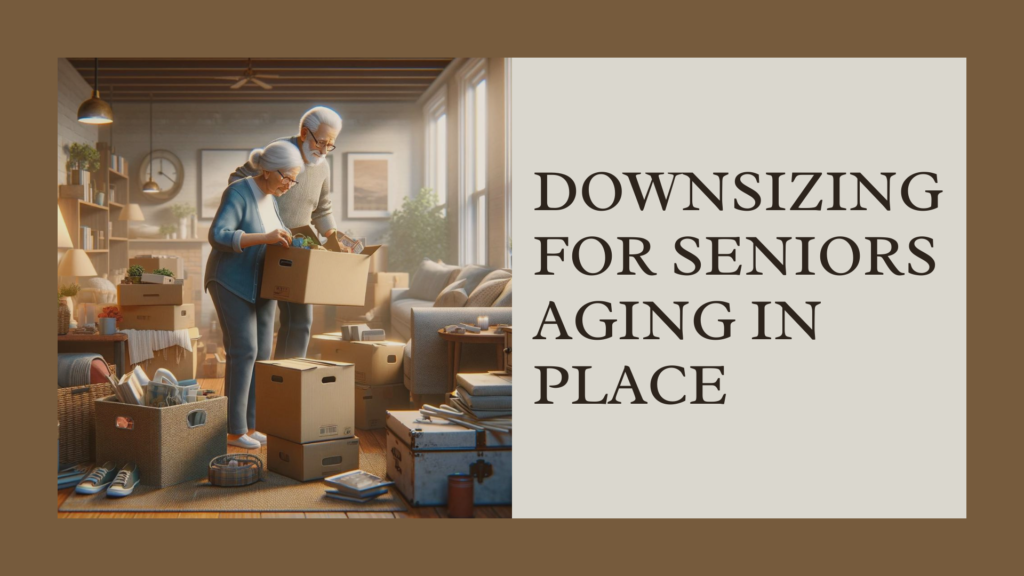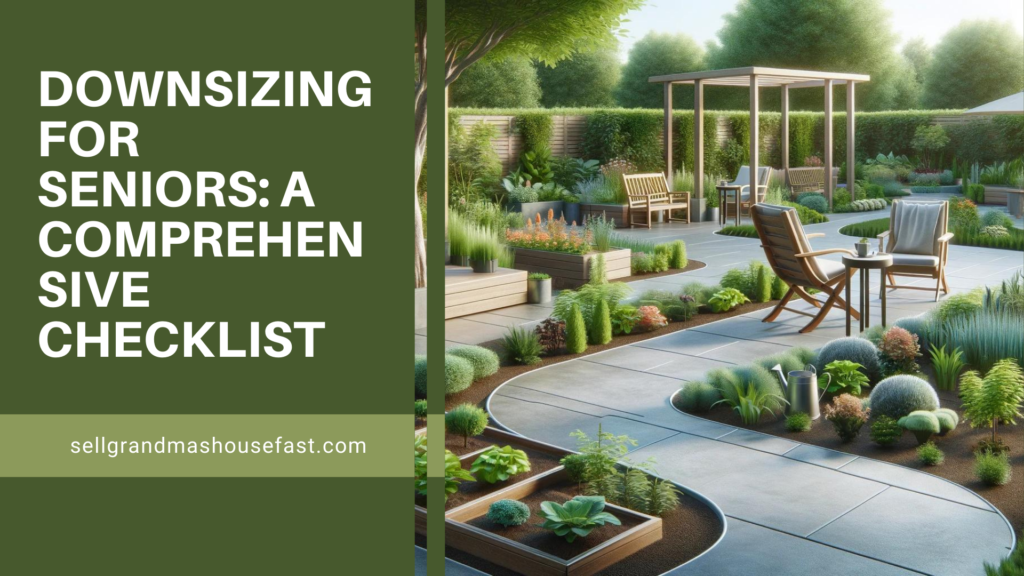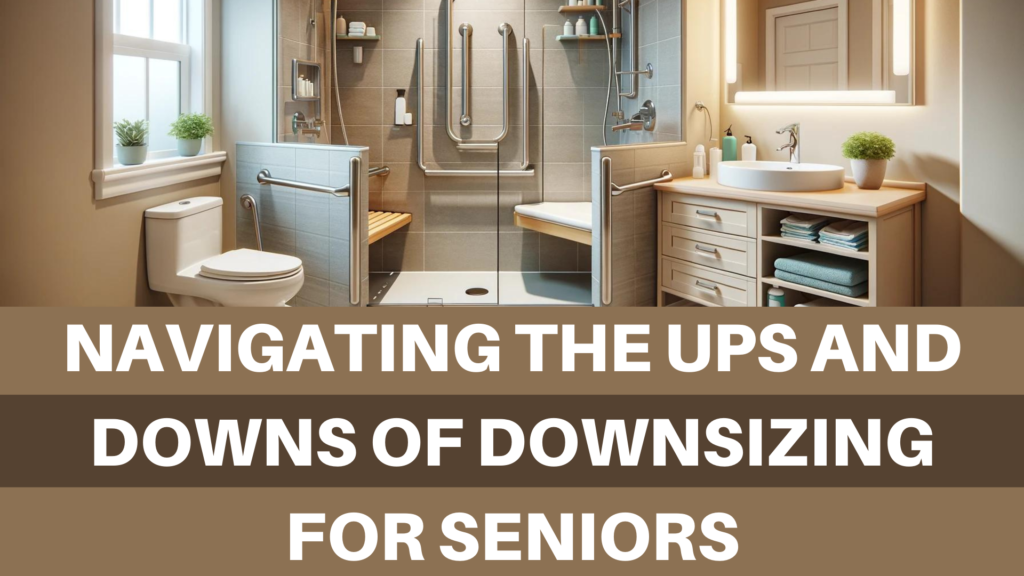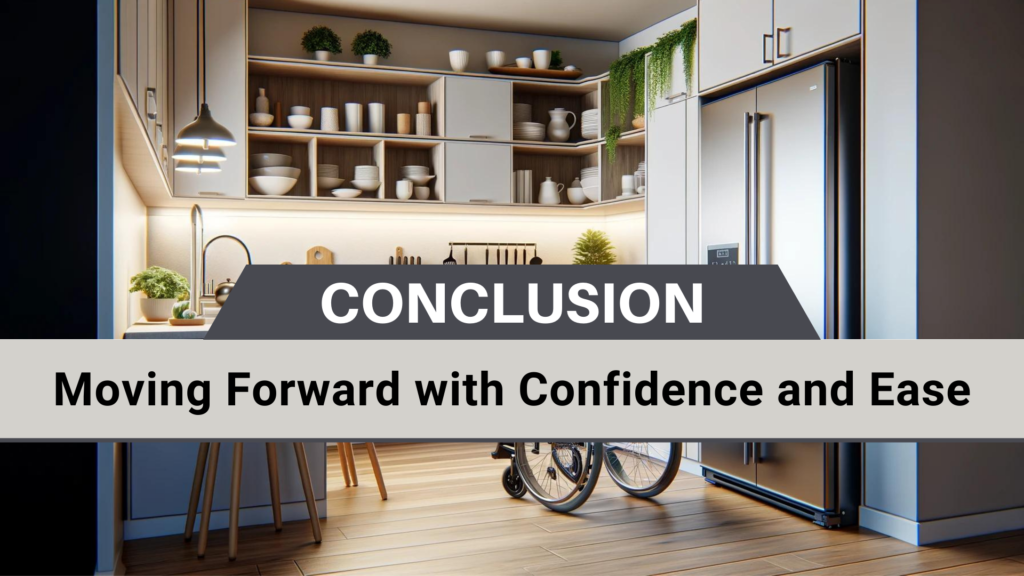Introduction: Embracing a New Chapter – Downsizing for Seniors
Downsizing for seniors marks a significant pivot toward embracing a simpler, more manageable lifestyle as they enter their golden years. This transition isn’t just about moving to a smaller space—it’s a journey toward efficiency, safety, and comfort, aligning with the evolving needs of senior living. The decision to downsize often comes at a crossroads of life’s chapters, where the allure of a less burdensome, more streamlined way of life becomes increasingly appealing.
Benefits of Downsizing for Seniors include:
- Financial Savings: Moving to a smaller home can significantly reduce living expenses, from utility costs to property taxes.
- Safety and Accessibility: Senior-friendly living spaces are designed with mobility and safety in mind, offering features like single-floor living and walk-in showers.
- Simplified Lifestyle: A smaller space means less maintenance and cleaning, offering seniors more time to enjoy their hobbies and social activities.
- Emotional Relief: Downsizing can be a liberating experience, offering a chance to declutter and focus on what truly matters.
The importance of this transition cannot be overstated. It’s not merely a change of address; it’s a proactive step toward ensuring a quality of life that is both fulfilling and sustainable. With the right planning and support, downsizing for seniors can be a smooth, rewarding process that opens the door to a new chapter filled with potential.
Let’s dive into the details of downsizing for seniors, evaluating the current real estate market‘s impact, exploring aging in place, and providing a thorough guide to make this transition as smooth as possible. Through a blend of professional insights, practical tips, and real-life examples, we aim to equip you with the knowledge to navigate this journey with confidence and ease.
Tit Bits: Did you know? The National Association of Senior Move Managers specializes in assisting older adults and their families with the downsizing and moving process, highlighting the growing recognition of this important life transition.
Does Downsizing Make Sense, Even in Today’s Market?

In an ever-fluctuating real estate market, the decision to downsize is more nuanced than ever for seniors. With housing prices experiencing ups and downs and the economic landscape shifting, many are left wondering if downsizing is a wise choice. Let’s break down the current market dynamics and the inherent advantages of downsizing, especially for seniors, to provide clarity on this pivotal decision.
Evaluation of the Current Real Estate Market
The real estate market has always been a rollercoaster of highs and lows, influenced by economic policies, demographic trends, and societal shifts. Recently, we’ve seen a trend toward increased demand for smaller homes for retirees, driven by a desire for more manageable living spaces that fit a lock-and-leave lifestyle. This demand, coupled with limited housing inventory in certain areas, can affect pricing and availability, making the timing of downsizing critical.
Market Trends:
- Increasing demand for homes in age-restricted or senior-friendly
- Rising interest in locations with lower costs of living and taxes is beneficial for fixed-income seniors.
- Technological advancements make homes smarter and more adaptable to senior living needs.
Advantages of Downsizing in the Current Economic Climate
Despite the market’s unpredictability, downsizing can offer tangible benefits, making it a compelling option for many seniors. Here are a few key advantages:
- Cost Efficiency: In a market where every penny counts, moving to a smaller home can lead to substantial savings on utilities, maintenance, and property taxes, stretching retirement funds further.
- Equity Release: Selling a larger family home in a high-demand market can free up equity, providing a financial cushion or funding for a more comfortable retirement
- Lifestyle Optimization: Smaller spaces are often easier to maintain, leaving more time and resources for travel, hobbies, and family.
- Community Benefits: Many downsizing options include communities with amenities tailored to senior living, promoting an active and social lifestyle.
Tit-Bits: A recent survey indicated that over 60% of seniors considering downsizing are motivated by the desire for a simpler lifestyle, underscoring the non-financial benefits of this transition.
Understand the first steps to selling your home with ease. Discover our process here and learn more through First Steps to Home Selling.
Downsizing for Seniors Aging in Place

The concept of aging in place holds a special appeal for many seniors, emphasizing the desire to remain in a familiar environment through the golden years. However, this doesn’t necessarily mean staying put in a home that no longer suits one’s needs. Downsizing while aging in place can be a strategic move, blending the comfort of familiar surroundings with the practicality of a more manageable living space. Here’s how seniors can approach downsizing within their current communities or by making slight location adjustments to ensure safety, comfort, and a high quality of life.
Strategies for Seniors to Downsize While Remaining in Familiar Surroundings
- For those attached to their current homes, consider modifications that make the space more navigable and senior-friendly. This could involve remodeling to create a more open floor plan, adding safety features like grab bars in the bathroom, or even converting a ground-floor room into a bedroom to avoid stairs.
- Sometimes, the best downsizing option is nearby. Look for smaller homes or senior living arrangements within the same neighborhood or community. This allows for a smoother transition, maintaining established social connections and routines.
Tips on Adapting Current Homes to Be More Senior-Friendly and Safe
Home Adaptation Tips:
- Reduce Fall Risks: Remove trip hazards, install non-slip flooring, and ensure ample lighting throughout the home.
- Enhance Accessibility: Consider installing ramps for entryways, stairlifts for multi-level homes, and walk-in tubs or showers with bench seats.
- Smart Home Technologies: Leverage technology for safety and convenience, such as emergency response systems, smart thermostats, and voice-activated devices.
Tit-Bits: According to the AARP, over 90% of seniors wish to remain in their homes as long as possible, highlighting the importance of adaptable living spaces.
Downsizing For Seniors: A Comprehensive Checklist

Embarking on the downsizing journey requires meticulous planning and organization. A comprehensive checklist can guide seniors through this process, ensuring no detail is overlooked. Each step should be approached with care and consideration, from sorting personal belongings to finalizing the move. This checklist serves as a roadmap for a smooth and organized transition to a smaller, more manageable living space.
Preparing for the Move
- Determine what you need in your new living space, considering size, accessibility, location, and amenities.
- Go through belongings and decide what to keep, sell, donate, or discard. Prioritize items based on sentimental value and practical use.
- If possible, obtain a floor plan of your new home and visualize where your belongings will go. This can help in deciding what to keep.
- Consider enlisting the help of a senior move manager, a real estate agent experienced in downsizing, and a reputable moving company.
During the Move
- Label boxes clearly and keep an inventory list. Pack a separate “essentials” box for items you’ll need immediately upon arrival.
- Make sure to transfer or cancel utilities, subscriptions, and services when you move to a new address.
- Notify important parties of your address change, including family, friends, banks, and healthcare providers.
Settling Into Your New Home
- Begin with the essentials, gradually setting up your new space to feel like home.
- Make any necessary modifications to enhance accessibility and comfort in your new home.
- Explore opportunities to meet neighbors and participate in community activities.
Spread the word on senior-focused real estate solutions! See our unique approach here and share our guide, First Steps to Home Selling, with your network.
Tips On Efficient Downsizing for Seniors
Downsizing effectively involves more than just reducing the volume of possessions; it’s about making smart decisions that align with a simpler, more fulfilling lifestyle in retirement. Here are expert tips for selecting the right smaller home, organizing the move, and planning for a cost-effective transition that meets the unique needs of seniors.
Selecting the Right Smaller Home
- Prioritize Location: Look for homes in communities that offer easy access to healthcare, social activities, and public transportation. Proximity to family and friends can also be a crucial factor.
- Consider Accessibility: Choose a home that either already meets the standards for accessible living or can be easily modified. Features like no-step entries, single-floor living, and accessible bathroom fixtures can make a significant difference in comfort and safety.
- Assess Community Amenities: Senior-friendly communities often provide amenities like fitness centers, social clubs, and maintenance services, which can improve your quality of life.
- Think Long-Term: Ensure the home you choose is adaptable to your changing needs, allowing you to age in place comfortably and securely.
Tit-Bits: A National Council on Aging survey found that many seniors overlook the potential emotional cost of downsizing, emphasizing the need for support and planning.
Efficient downsizing for seniors is about more than just moving to a smaller space; it’s about crafting a lifestyle that brings joy, comfort, and convenience. By following these tips, seniors can ensure their downsizing journey is not only successful but also a step toward a more prosperous, more engaged life in retirement.
Navigating the Ups and Downs of Downsizing for Seniors

Downsizing, while often a positive step towards a more manageable lifestyle for seniors, can also bring its share of emotional and psychological challenges. Understanding and preparing for these aspects can make the transition smoother and more fulfilling. This section explores how to address these challenges and highlights support networks and resources that can assist seniors through this significant life change.
Support Networks and Resources
- Senior Move Managers: These professionals specialize in helping older adults downsize, offering both logistical and emotional support throughout the process.
- Community Resources: Many communities offer workshops, support groups, and resources for seniors going through the downsizing process. These can be great places to meet others in similar situations.
- Online Forums and Social Media: Online communities can provide guidance, support, and a sense of belonging. Websites and forums dedicated to senior living often have sections specifically about downsizing.
- Local Senior Centers: Senior centers are valuable resources for information and support. They can connect seniors with local services, including moving assistance, legal advice, and emotional support.
Conclusion: Moving Forward with Confidence and Ease

Downsizing for seniors is more than a transition to a smaller living space; it’s a meaningful shift toward a lifestyle that emphasizes ease, safety, and community. While it may present challenges, this journey offers profound opportunities for personal growth, simplification of daily life, and engagement in enriching experiences tailored to this vibrant stage of life. Seniors can navigate this transition with confidence and grace by approaching downsizing with thoughtful planning, emotional readiness, and the right support.
For those embarking on or considering the downsizing journey, Sell Grandma’s House Fast offers a wealth of resources and services to support seniors through this significant life transition. From practical advice on preparing your home for sale to connecting with communities that match your lifestyle needs, our platform is dedicated to helping seniors move forward with confidence and ease. Start your senior real estate journey with us. Check out our About Us for expert guidance and explore First Steps to Home Selling for practical advice.
In conclusion, downsizing for seniors is a significant but manageable undertaking that can lead to a more enjoyable and sustainable way of living. By embracing this change with an open heart and mind, seniors can discover new joys and opportunities in their golden years. Remember, it’s not just about moving to a smaller space—it’s about making room for new memories, experiences, and connections that enrich life in profound ways.




